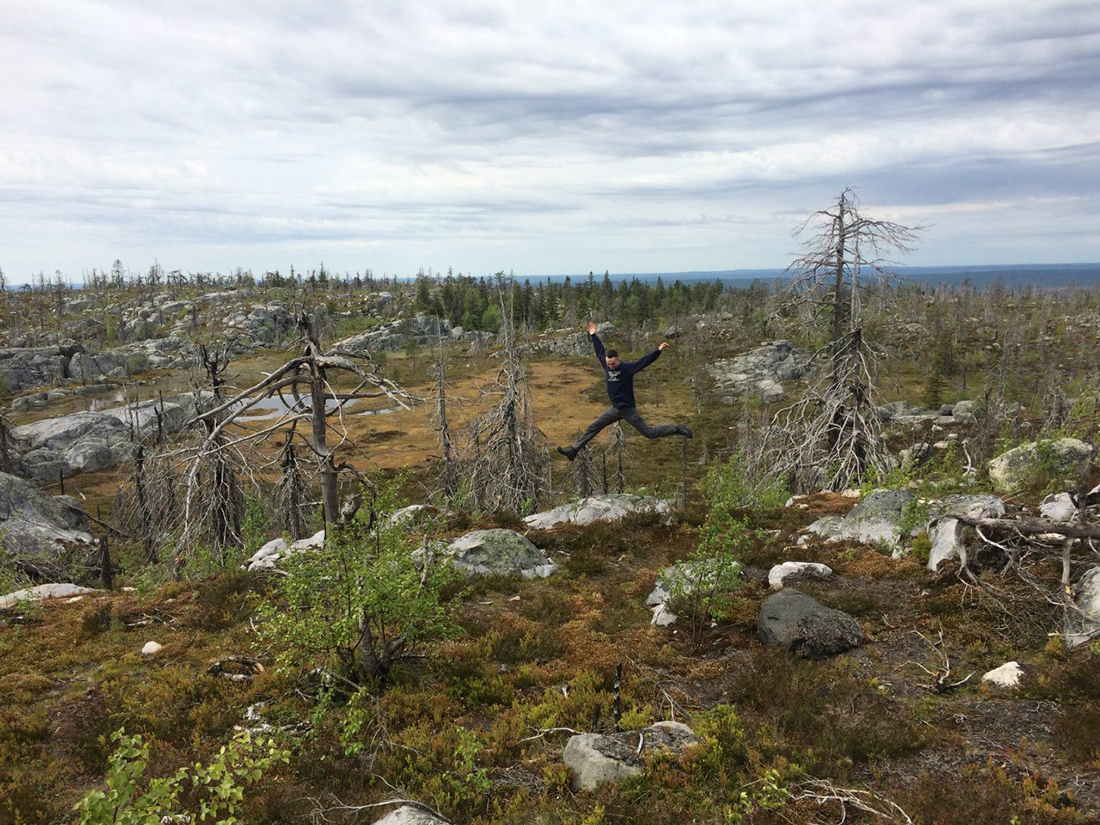
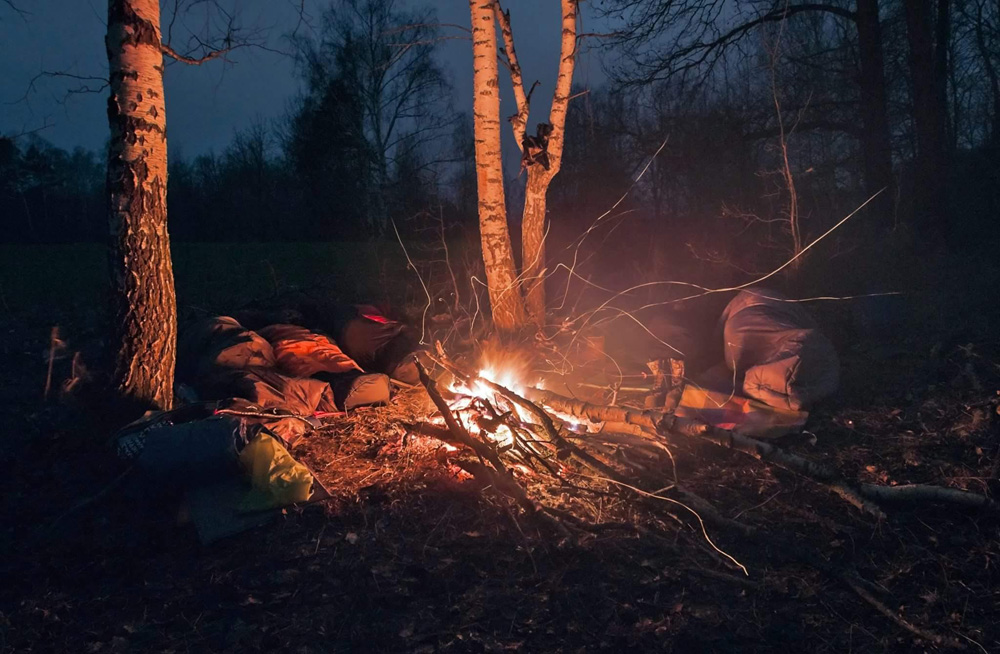 Spending a night in the wild is a part of the survival course. Photo courtesy: Dmitri Aleshkin
Spending a night in the wild is a part of the survival course. Photo courtesy: Dmitri Aleshkin
"I spent a week in a forest near Tver in the fall, living off tree bark, mushrooms and berries. For shelter, I built a makeshift hut from birch trunks covered with branches. The roof of my hut leaked, and the small fire only gave a little heat," recalls Vassily Telitsyn, a post-graduate student in the Department of History at Moscow Region State University. He took a survival course in the wild so as to take a break from the hustle and bustle of the megalopolis and to challenge his own stamina.
However, his journey turned out to be far from a pleasant distraction: He had to make fire in the pouring rain, trap hares and squirrels with snares and treat the cold he caught with infusions of medicinal herbs he managed to find. Having walked 150 kilometers across the wild forest of Tver Region in a week, he obtained experience similar to that of a trained intelligence operative or a hunter at the dawn of the world.
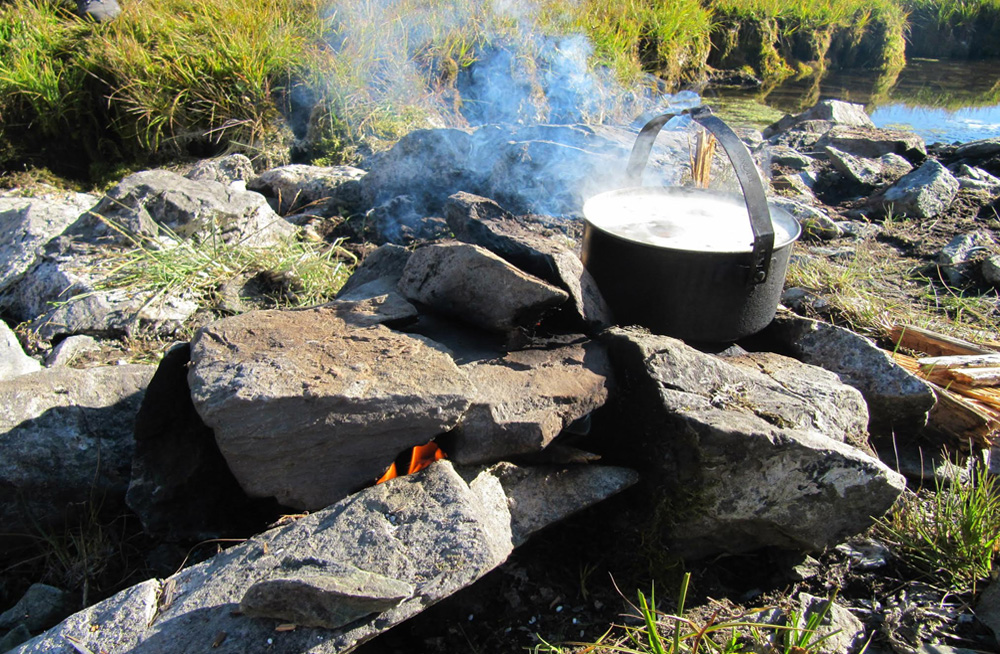 You will be trained how find and make food in the wild. Photo courtesy: Dmitri Aleshkin
You will be trained how find and make food in the wild. Photo courtesy: Dmitri Aleshkin
The Volchitsa Club (She-wolf Club) has been teaching survival courses for five years all over the world, from the Amazon rainforest to the Kamchatka Peninsula. Tourists are not placed in extreme conditions right away: The instructors have devised a multi-stage system of survival skills training. The final exam includes walking 200 kilometers across the taiga or over the mountains with nothing but a knife, a fire-striker and a rope. The student is followed by an instructor, but does not receive any assistance from him.
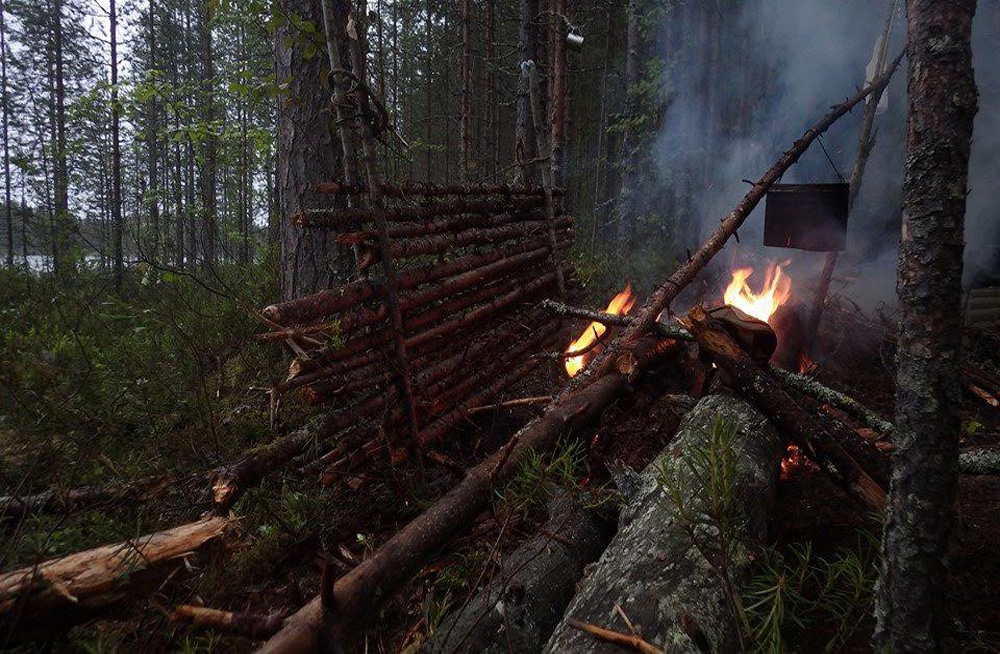 Building yourself a shelter in the Karelian forest is no picnic. Photo credit: Dmitri Aleshkin
Building yourself a shelter in the Karelian forest is no picnic. Photo credit: Dmitri Aleshkin
The main objective of the survival course is to train an individual to preserve his or her life and health in a dire situation. You’ll learn how to assemble a water filter from moss, sand and coal to purify water and remove pathogenic bacteria. You need to pack the ingredients in hard and slowly drain water through them, drop after drop. Due to its blood-staunching properties, moss is also irreplaceable when it comes to treating wounds. Trunks and branches of young trees can be used for the construction of a shelter or a chum. If you are running low on time, you can put a layer of fir-tree branches right on the warm fire pit and cover yourself with more branches. A "sandwich" like that is comfortable enough to spend the night in, no matter what the weather’s like.
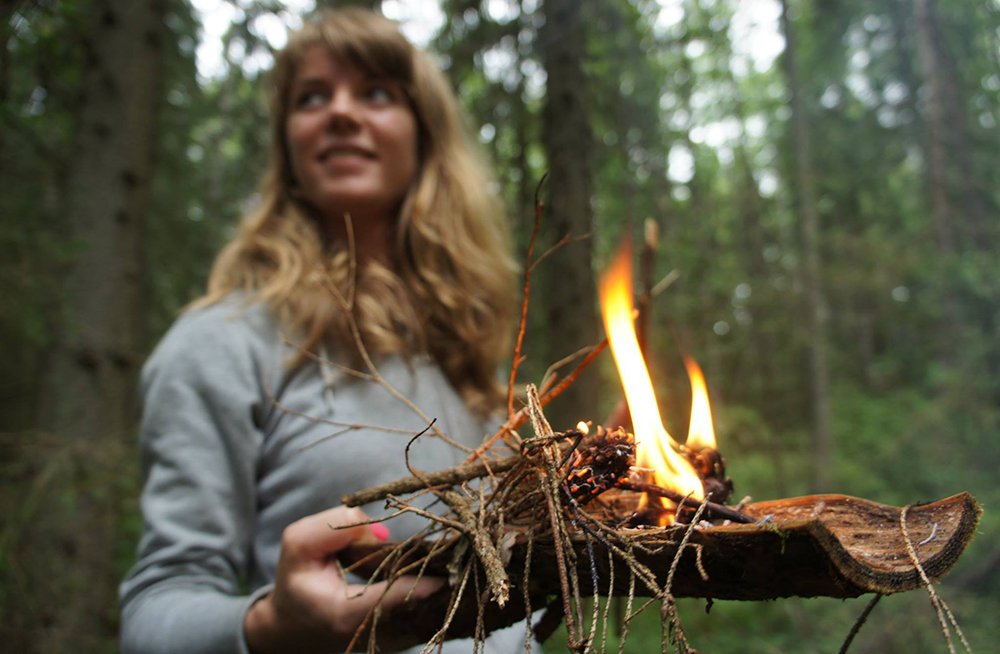 You will be trained how to make a fire without a lighter or the matches. Photo courtesy: Dmitri Aleshkin
You will be trained how to make a fire without a lighter or the matches. Photo courtesy: Dmitri Aleshkin
Furthermore, there are various ways of protecting yourself against bears. Normally, wild animals avoid humans, but in the event of a chance encounter, experts recommend that you hold a backpack or a jacket above your head to seem bigger than your adversary. The animal won’t dare to attack such a monster. Experienced travelers can also resort to another weapon. Dmitry Aleshkin, head of the Volchitsa Club, recalls an occasion when the “lord of the forest" ran into his group in Kamchatka. "The bear was stunned when we used lots of Russian swear words creatively. It seemed to us that the bear disappeared almost instantly."
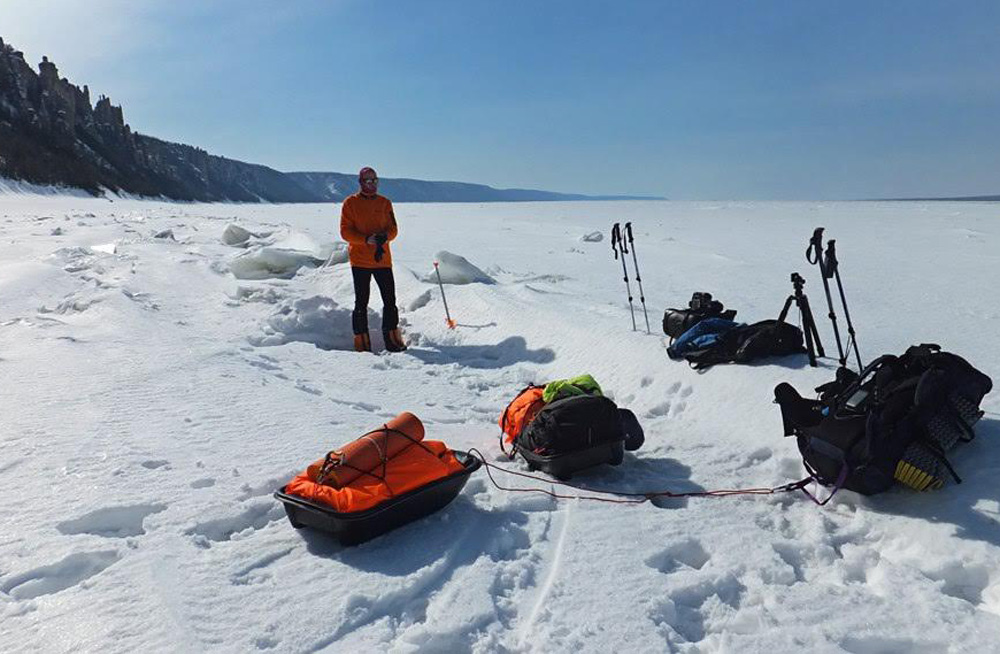 Winter survival course. Photo credit: Dmitri Aleshkin
Winter survival course. Photo credit: Dmitri Aleshkin
The price of the course depends on the difficulty level: Two days of training costs 7000 rubles ($120), while the extended course (5 or 6 days) includes basic survival skills and costs 22,000 rubles ($377). The Survivor Course is a more considerable challenge: A group of two or three people accompanied by an instructor go on a nine-day hike to the Perm Region (the Northern Urals) or the Republic of Tuva. The students choose their own route and look for water, food and shelter in the wild. This course costs 27,000 rubles ($463). The final survival exam involves being dropped off in remote and wild territory and making your way back to a home base located four or five days’ travel from Moscow. This exam costs 154,650 rubles ($2655).
 Survival course in the Karelian forest. Photo courtesy: Dmitri Aleshkin
Survival course in the Karelian forest. Photo courtesy: Dmitri Aleshkin
"Finding yourself in a wild forest, you can’t help but feel lonely and vulnerable. It’s a stressful experience for anyone who hasn’t undergone special training. It has often happened that hikers get lost after wandering 200–300 meters away from camp and start sending signals to their friends in order to find their way back," points out Maxim Sekarov, one of the club's instructors. At these times, hikers develop a keen sense for the value of human interaction and mutual aid. For many, survival courses are an endurance test.
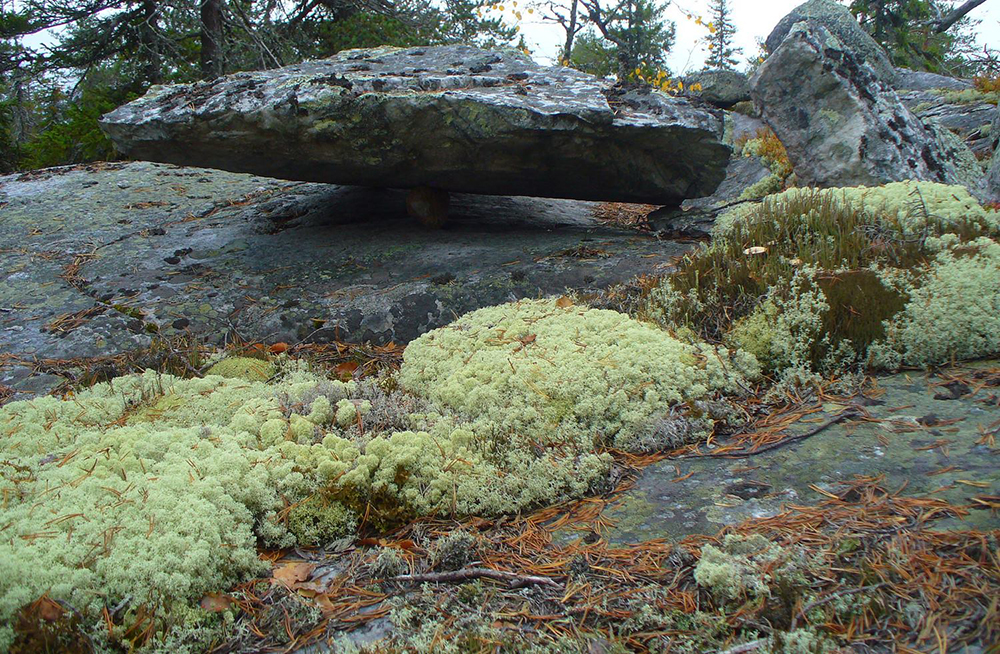 Wild nature of Karelia. Photo courtesy: Dmitri Aleshkin
Wild nature of Karelia. Photo courtesy: Dmitri Aleshkin
"Swamps and mosquitoes turned out to be the biggest challenge for me. There was no way to escape them. I'd never been on a hike before, so I was afraid of getting lost and often wondered whether we were going in the right direction," says Parisian Jonas Pirotte about his experience of survival in Karelian forests.
Going on a long hike was suggested by some friends of his, descendants of Russian emigrants who now live in France. Tourist Tatiana Tikho explained why she had decided to take a survival course with her friends, Jonas Pirotte and Oleg Ossina. "Born in France into a Russian family, we do all we can to stay connected to our roots. This hike was a great adventure for me, and it gave me an opportunity to feel the spirit of our historical motherland. Jonas came with us to get to know Russia."
If using any of Russia Beyond's content, partly or in full, always provide an active hyperlink to the original material.
Subscribe
to our newsletter!
Get the week's best stories straight to your inbox